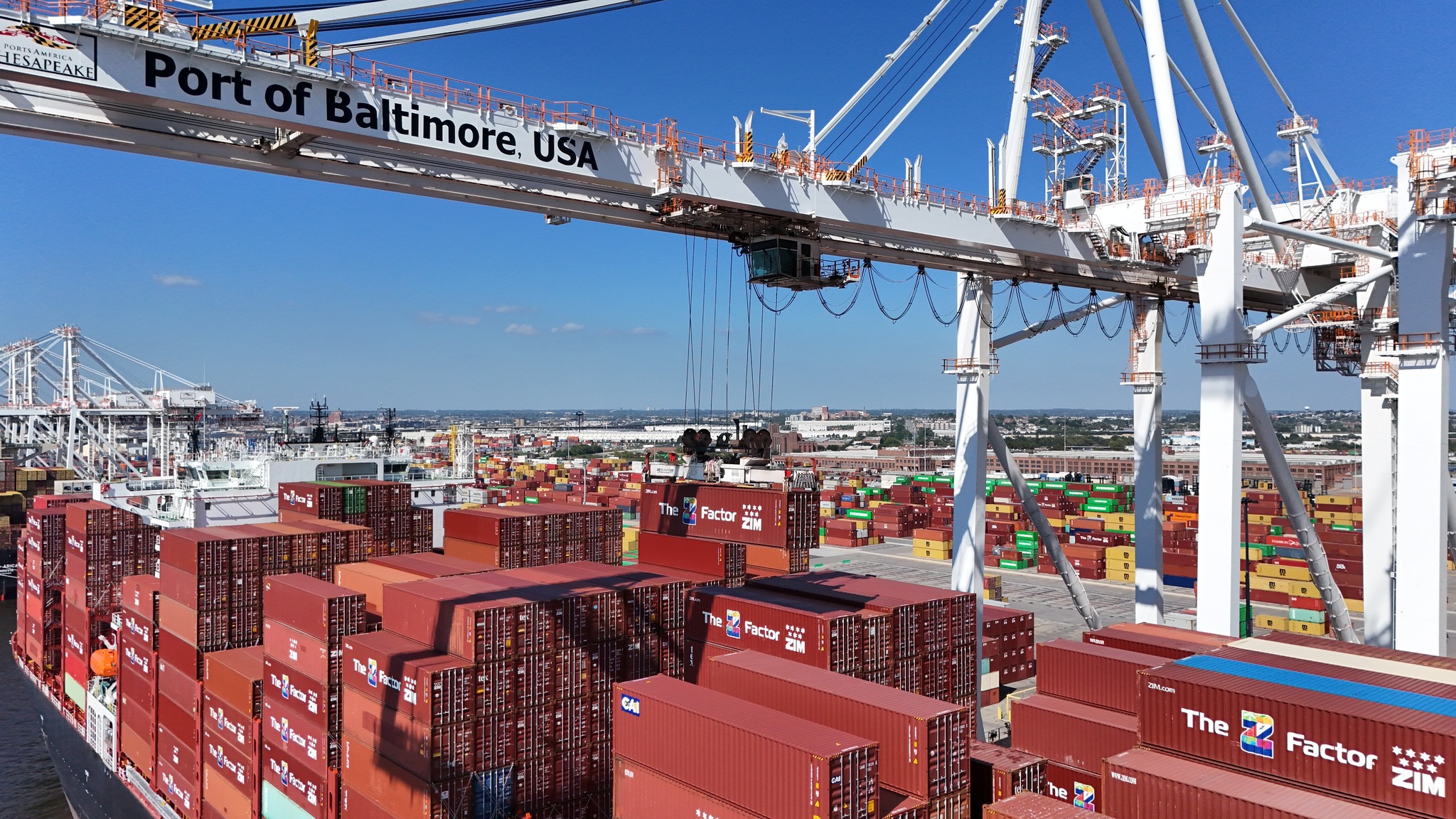Our last piece introduced the federal government’s selections for nearly $3 billion in grants through the United States Environmental Protection Agency’s (EPA) Clean Ports program. Through two competitions — the Zero-Emission Technology Deployment (ZE Tech) Competition and the Climate and Air Quality Planning (CAQP) Competition — the program aims to upgrade and electrify equipment and infrastructure and to implement air quality and climate planning across 55 domestic ports.
After the press release was launched, the news was shared at the Port of Baltimore, one of the ports selected through the program. Approximately $147 million was allocated to the Maryland Port Administration for changes to be implemented there.
“The projects supported by the Clean Ports Program will help reduce emissions, improve air quality in the Baltimore region, and create more clean energy jobs,” U.S. Sen. Ben Cardin noted in the press release.
The port administration’s Equipment Electrification and Terminal Decarbonization project will receive $145.66 million from the ZE Tech Competition.
It will use this funding to purchase zero-emission cargo handling equipment and drayage trucks. The project will also channel the money to transform the entire port into a zero-emission hub by installing charging infrastructure and battery energy storage systems, as well as implementing improvements to its electrical infrastructure.
Meanwhile, $1.97 million will arrive as a planning grant through the CAQP Competition. This funding will help the port to map out its journey to future emissions reduction efforts. Specifically, it will use the financial influx to update and expand its emissions inventory, conduct an alternative energy and workforce analysis, and develop an emissions reduction strategy and a community engagement plan.
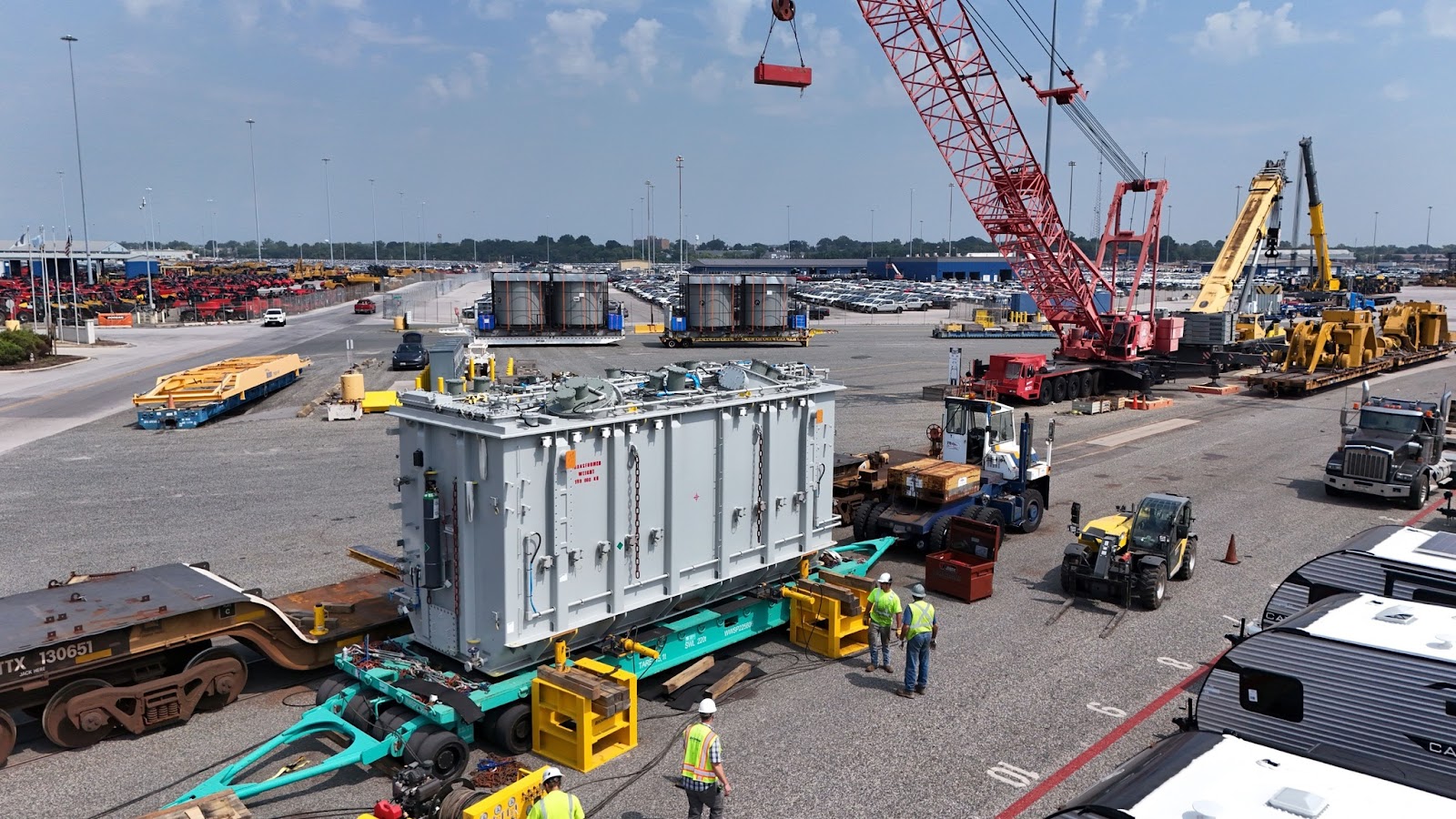
Photo Courtesy Port of Baltimore
As a result of these investments, more than 2,000 good-paying union jobs, including over 350 manufacturing positions, are expected to be added to a workforce in the area that is already 20,000 strong. All of these employees are essential to the port’s support of American trade in farm equipment and motor vehicles.
As of 2022, according to the Bureau of Transportation Statistics, the Port of Baltimore was responsible for 40.6 million tons of domestic and foreign waterborne trade, ranking 16th in the U.S. with year-over-year growth of 8.4%. In fact, the port accounts for 13% of Maryland’s gross domestic product, with a daily economic impact of $192 million and an annual impact of more than $70 billion.
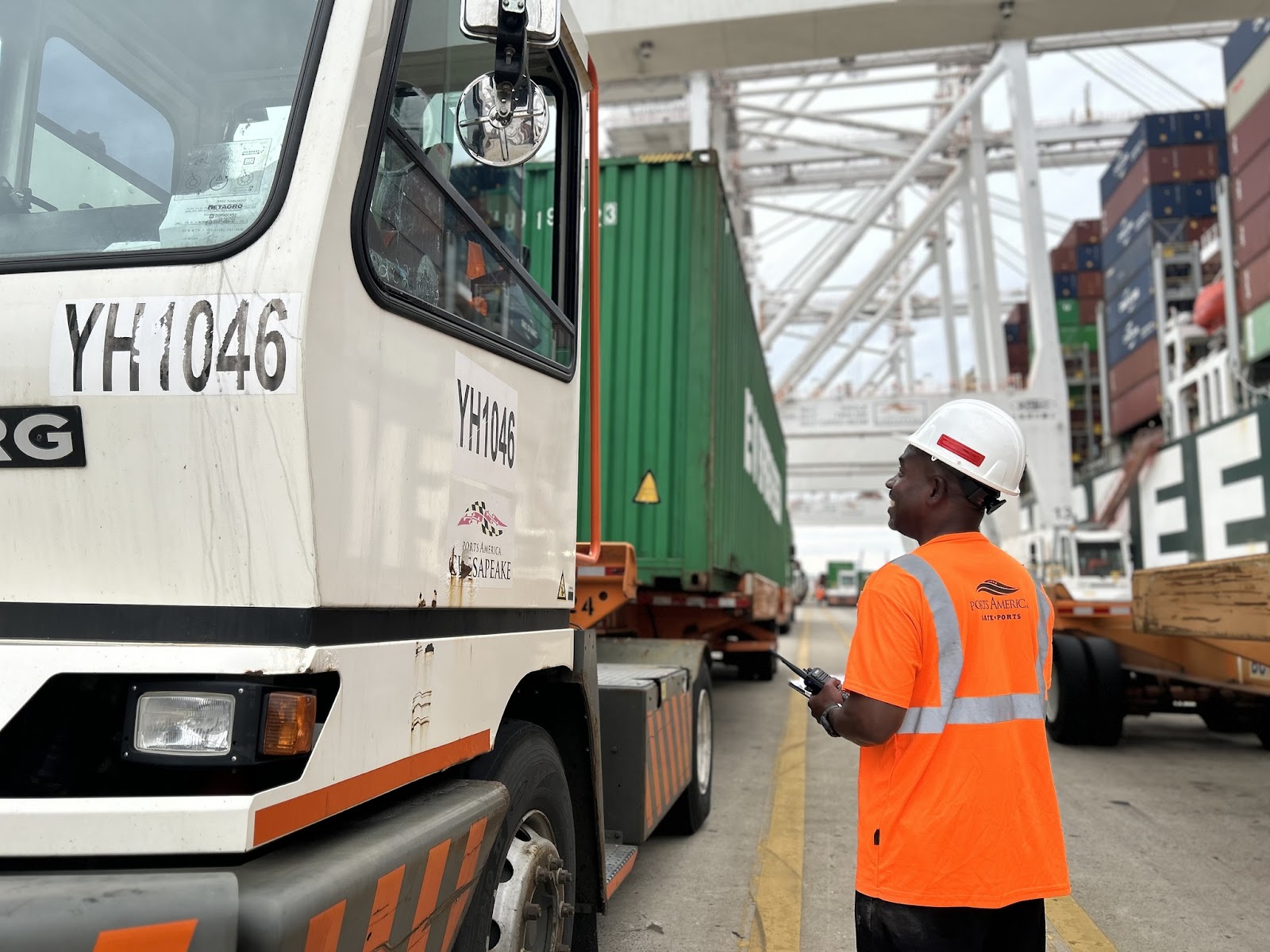
Photo Courtesy Port of Baltimore
Work at the city’s port is especially important in the wake of a devastating accident in March, in which the DALI cargo ship lost power and crashed into the Francis Scott Key Bridge, causing its collapse, taking the lives of six construction workers and disrupting shipping routes up and down the East Coast.
Prior to this announcement, the Department of Justice settled with Grace Ocean Private Limited and Synergy Marine Private Limited, the ship’s owners, for more than $100 million. It resulted in full compensation to the federal government for its assistance in the wake of the disaster, which involved the removal of 50,000 tons of asphalt, concrete, and steel out of the Fort McHenry Channel and the establishment of temporary routes to alleviate the newly formed commercial bottleneck until the port could reopen after 78 days. Meanwhile, the state continues to advance its plans to rebuild the bridge.
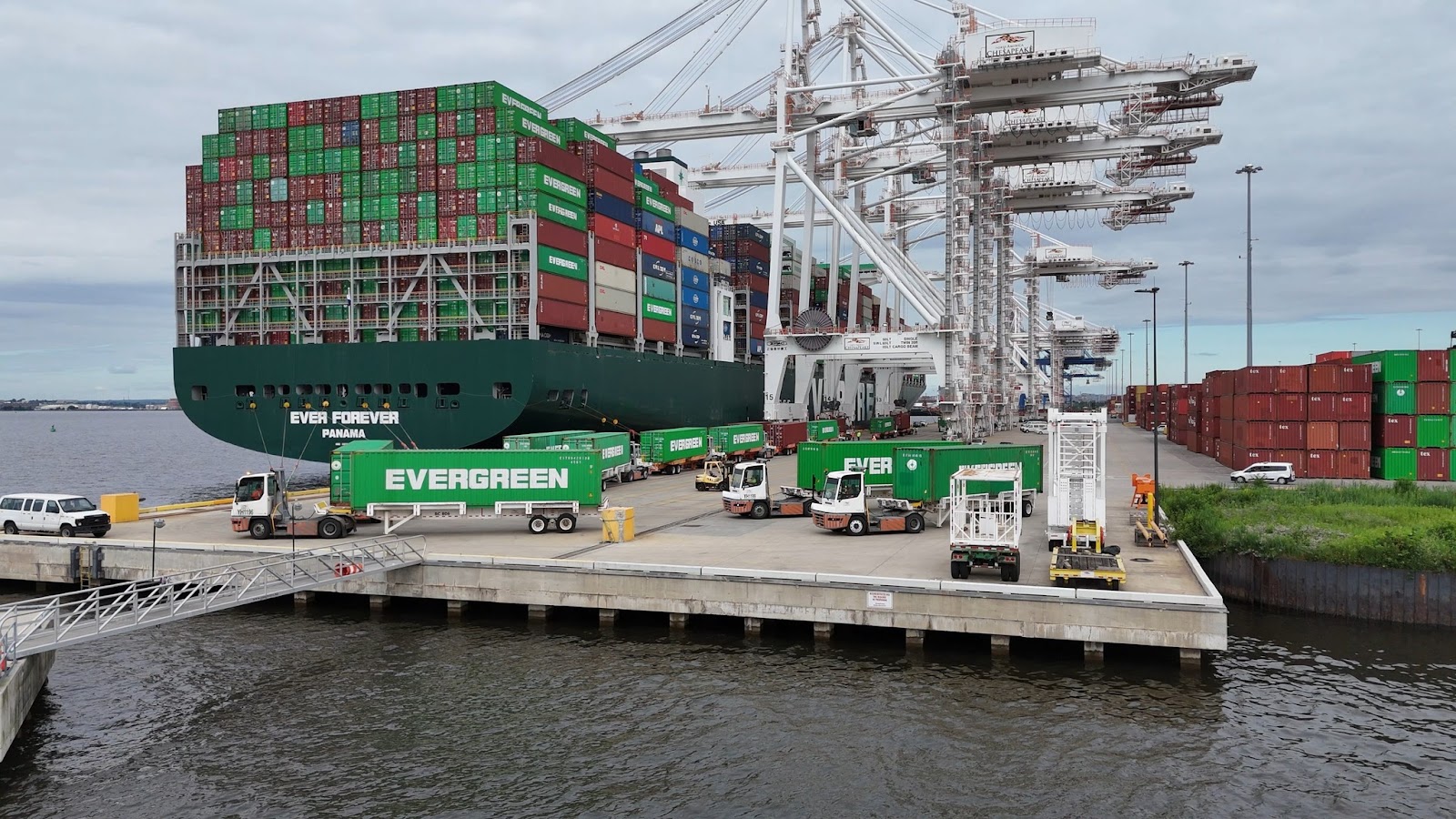
Photo Courtesy Port of Baltimore
This effort is far from the only infrastructure investment the current administration has directed toward the city and Maryland at large. In fact, $13 billion from the Investing in America agenda has gone toward 970 projects in the state and led to $3 billion in follow-on private sector investment.
For example, the week before this announcement, the U.S. Department of Transportation earmarked $38.4 million through the Infrastructure for Rebuilding America Grant Program of the Infrastructure Investment and Jobs Act, or Bipartisan Infrastructure Law, for Baltimore’s port. Part of the funding, $30.91 million, was awarded for work at the port’s biggest general cargo facility, Dundalk Marine Terminal, including replacing 597 linear feet of wharf deck and installing flood barriers and tidal gates. Meanwhile, $7.5 million was awarded for repairs and for the replacement of portions of the Curtis Creek Drawbridge on I-695.
“Through the Infrastructure Investment and Jobs Act, we continue to deliver historic resources to upgrade everything from our transportation network to the Port of Baltimore,” U.S. Sen. Christopher Van Hollen expressed in a press release. “With these major federal investments, we are priming the Port for future growth — while sustaining the thousands of jobs it already supports — and modernizing an essential bridge for commuting and commerce. These efforts will help drive Baltimore’s economic success and create more good paying jobs for Marylanders.”
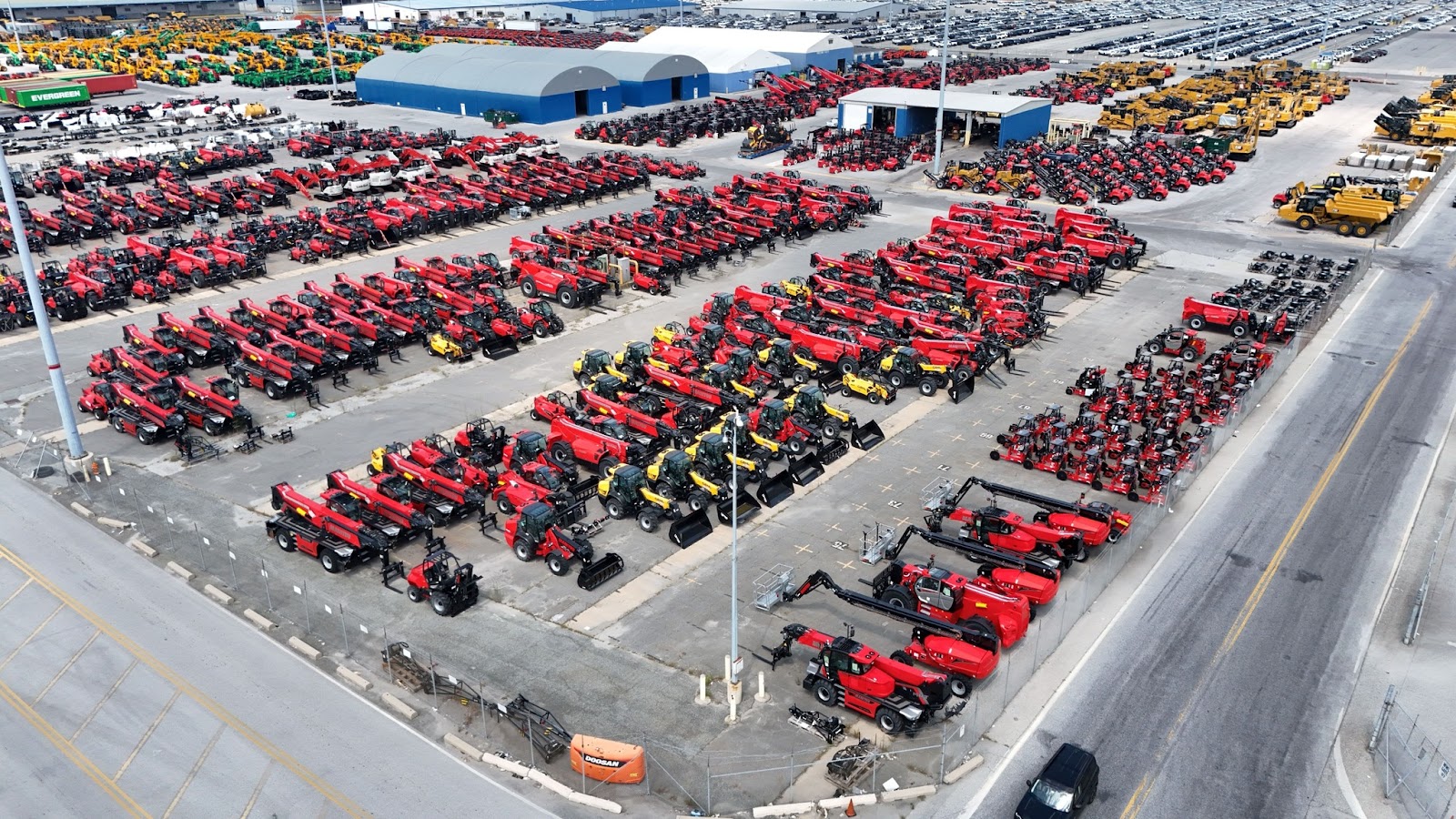
Photo Courtesy Port of Baltimore
It is not the first federal effort focused on cleaning up the nation’s ports, either. Since 2008, the EPA has issued 207 grants to states and territories through the Diesel Emissions Reduction Act (DERA), thereby investing about $196 million in the country’s ports. An additional $88 million was funneled into 67 projects supporting the ports sector. These projects retrofitted or replaced diesel engines to reduce emissions for public health, speed up fleet turnover with all eyes on cleaner technologies, and create jobs.
Surely, more federal funding will go toward the nation’s ports in the years to come, and Baltimore can be expected to be at the forefront of such efforts.

